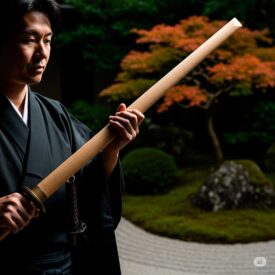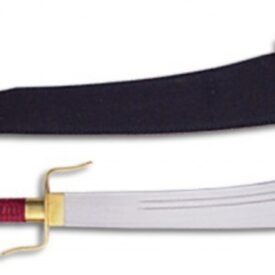The parts of a katana begin from the tip, with the Kojiri and continue with the saya, kurikata, sageo, seppa, koiguchi, tsuba, mekugi, fuchi, tsuka, ito, kashira … The origin of the Japanese katana goes back to the X-XII centuries.

For its curved line and having a single edge, the katana is considered a cutting weapon. The katanas distinctive curvature is due in part to the differential during the heating treatment to which it is subjected.
- Hamon: it is the differential line in the hardening of the sheet; the Notare´s wavy style for example;
- Hi: longitudinal groove on the sheet to lighten the workpiece. Another function is to absorb and distribute shock stress, preventing damage or twisting of the blade;
- Iori-Muné: nerve tipe of the sheet without recess;
- Kissaki: the tip;
- Mei: smith’s signature, usually in the Nakago;
- Mekugis: pins that hold the Tsuka (handle) to Nakago (tongue), used to be bamboo wood;
- Mekugi-Ana: holes for the pins.
- Menuki: decorative metal applications on the sides of the handle;
- Moto-Haba: sheet width;
- Moto-Kasane: sheet thickness in the Habaki;
- Mune: back;
- Nagasa: lenght;
- Nakago: tang, part of the sheet entering the handle;
- Niké: nerve recess;
- Saki-Haba: width of the sheet at the beginning of Kissaki;
- Samé: Tsuka liner. It used to be shark or ray skin to prevent slipping of the Tsuka-Ito;
- Sori: curvature;
- Sugata: sheet type;
- Tsuba: guard, buckler. It used to be decorated with natural motifs;
- Tsuka: handle;
- Tsuka-Ito: stringing of the handle;
- Yokote: line between the tip and the rest of the sheet.









